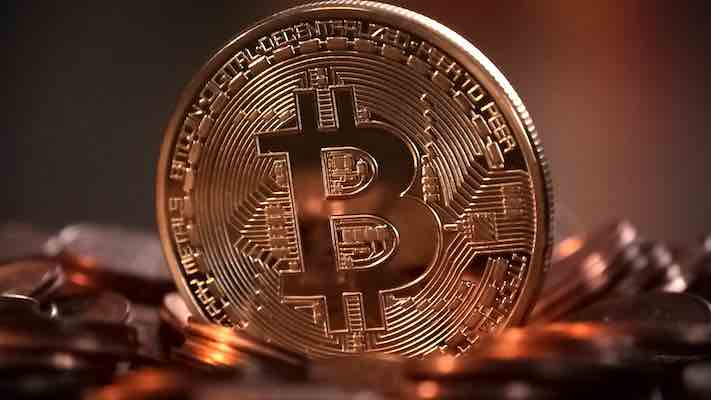World Digital Mining Summit 2023: Learn about the industry’s commitment to eco-friendly practices at this year’s summit. But is this possible. Let’s find it out.
Bitmain unveiled the Antminer S21, a state-of-the-art mining hardware solution, at the World Digital Mining Summit 2023 (WDMS) in Hong Kong on September 22. This event marked a significant milestone in the industry, as it revealed crucial performance metrics that had been highly anticipated. The Antminer S21 boasts an impressive hash rate of 200 terahashes per second (TH/s) and operates with remarkable efficiency at 17.5 joules per terahash (J/T). Furthermore, the S21 Hydro model achieves a hash rate of 335 TH/s while maintaining an energy efficiency of 16 J/T. This achievement is noteworthy because, until recently, the majority of Bitcoin ASICs operated at energy consumption levels exceeding 20 J/T.
As the cost of electricity continues to escalate annually, and with the Bitcoin halving event projected for April 2024, the mining community is shifting its attention toward enhancing the efficiency of ASIC miners. A lot of bitcoin miners are also looking into using renewable energy as a key component of their mining operations.
World Digital Mining Summit 2023 Discussions:
Efficiency and the integration of renewable energy sources were central topics of discussion during various panel sessions at the WDMS. In an opening roundtable discussion, representatives from prominent organizations such as Terrawulf, Core Scientific, CleanSpark, and Iris Energy shared their insights on the pivotal role that renewable energy sources will play in the mining industry following the 2024 Bitcoin supply halving.
Nazar Khan, Chief Operating Officer of Terrawulf, highlighted this shift, stating:
“In the world of power generation, there is a noticeable transition taking place. There is a concerted effort to reduce carbon emissions throughout the entire energy supply chain. Therefore, when we discuss the increased utilization of renewable energy by Bitcoin miners, it aligns with the broader trend of decarbonization happening across the United States, not limited to Bitcoin mining. Our role involves strategically locating our Bitcoin mining operations in regions where this decarbonization process is taking place.”
The impending supply halving will result in miners maintaining their existing capital and operational costs, alongside the need to service outstanding debts, while simultaneously witnessing a 50% reduction in block reward distribution.
Consequently, miners will need to either amplify the proportion of their hash rate derived from sustainable energy sources or implement efficiency enhancements in their ASIC mining hardware to sustain or elevate profitability levels.
Regarding the introduction of the Antminer XP 21 and its potential impact on the mining sector, Justin Kramer, founder of BMC, commented:
“The Antiminer S21 has the potential to revolutionize the cryptocurrency mining landscape if it proves to be reliable, competitively priced, and readily available. Of course, these are considerable ‘ifs’ given Bitmain’s history. This hardware essentially combines the computing power of two S19 100T miners into a single unit. However, the growing aftermarket firmware market, in conjunction with hydro/immersion cooling systems, equips miners with the means to maintain the profitability of older-generation miners, such as the S19. Consequently, while the S21 represents a substantial advancement, it may not render sub-110 TH/s miners completely obsolete.”
When asked about the most intriguing aspects of the new S19 XP, Kramer noted:
“I applaud Bitmain for taking the initiative to reward ecologically responsible mining operations with favorable prices and quick shipping through their brand-new Carbon Neutral Certificate program. However, it’s worth noting that both of the new S21 models offer a 33% increase in hash rate compared to the S19j XP (S21 200T versus 151T on S19j XP; S21 Hydro boasts 335T compared to the S19 XP Hydro at 257T). Is this merely a coincidence? I remain skeptical and suspect it signifies a continuation of Bitmain’s systematic model releases, where minor firmware adjustments and other modifications result in a moderate hash rate increase and the introduction of a brand-new mining solution.”
Bitcoin is on its way to becoming an environmentally, socially, and governance (ESG)-compliant asset
Over the past few years, Bitcoin miners and advocates have been vehemently refuting claims that Bitcoin mining is detrimental to the environment and that the industry’s reliance on fossil fuels contributes to increased carbon emissions.
Challenging this perspective, Haitian Lu, a professor specializing in accounting and finance at the Hong Kong Sustaintech Foundation, boldly stated:
“Bitcoin mining is driving the adoption of renewable energy in numerous regions.”
Lu elucidated that “over time, Bitcoin mining has grown more resource-efficient and has increasingly embraced cleaner energy sources. Historical trends reveal that human development, from an agrarian society to industrialization and toward a future digitalized economy, is invariably accompanied by escalating energy consumption per capita. What distinguishes this trajectory is humanity’s capacity to progressively harness renewable energy, thereby attaining sustainable development.”
In alignment with the viewpoints expressed by fellow panelists, Lu emphasized that Bitcoin miners’ participation in demand response agreements with energy producers and distributors enhances energy grid efficiency.
In addition to Bitcoin mining leveraging untapped energy resources and facilitating the advancement of renewable energy projects, the efficiency enhancements offered by next-generation ASICs like the Antminer S21 significantly reduce the energy consumption of miners while concurrently allowing them to augment their profitability.






